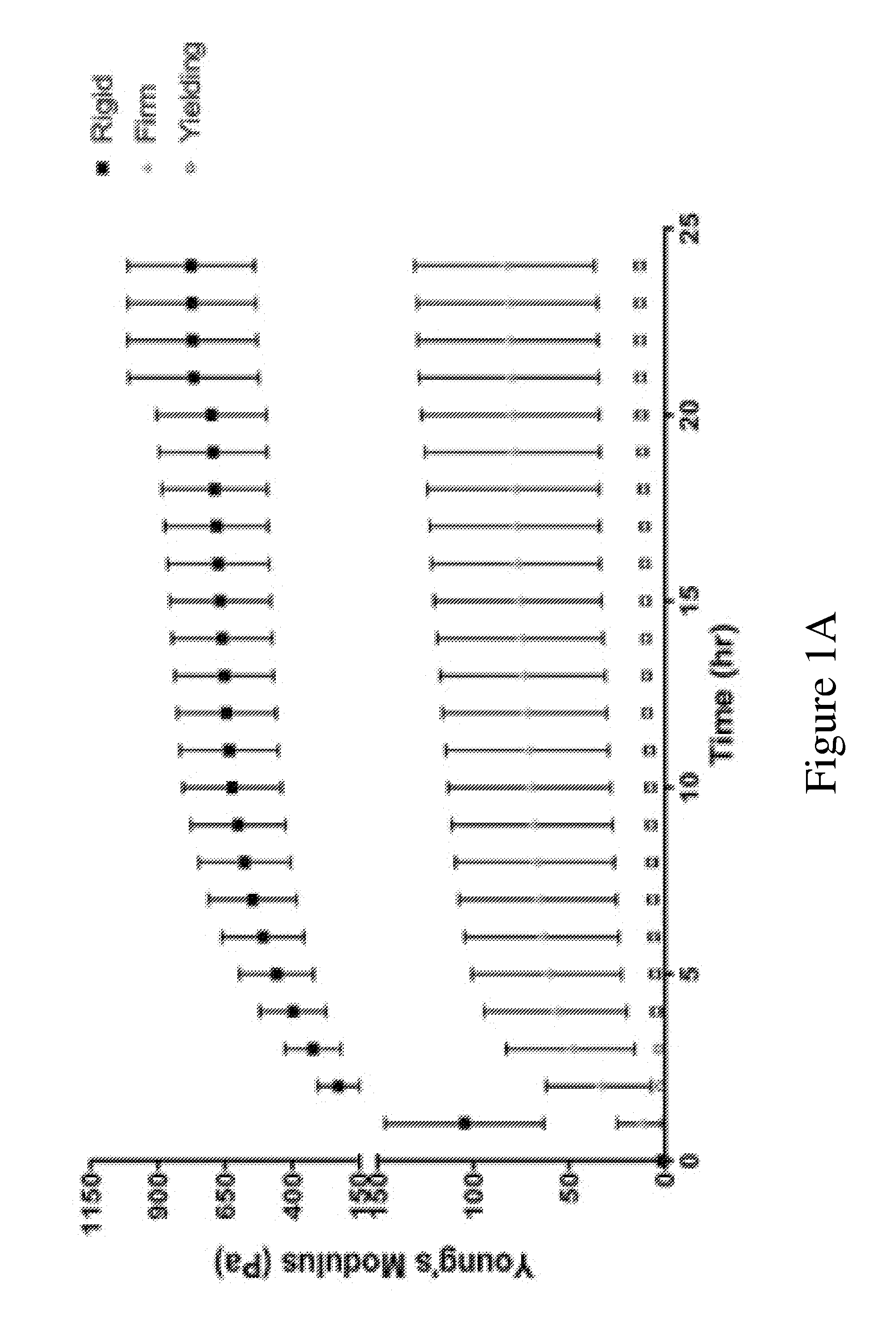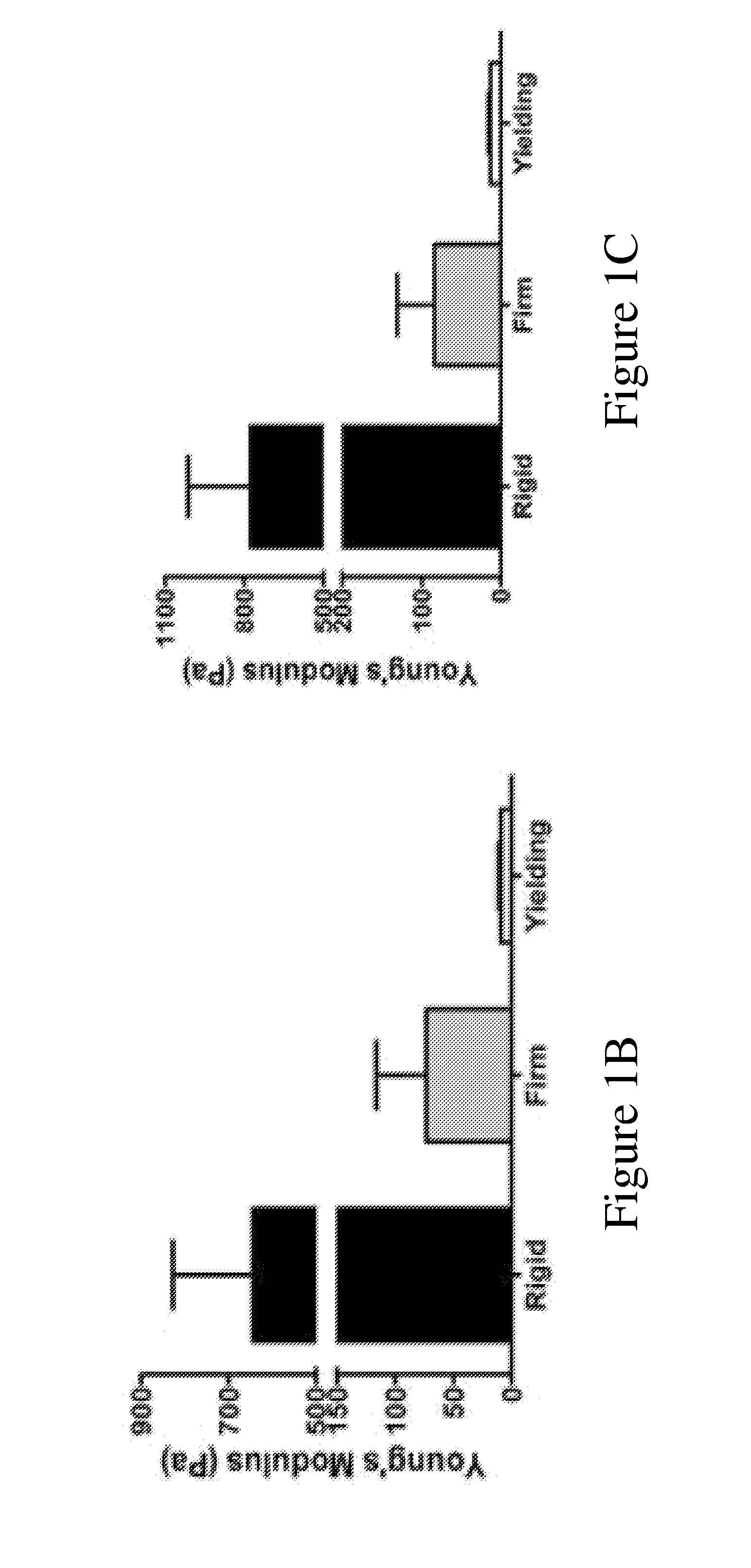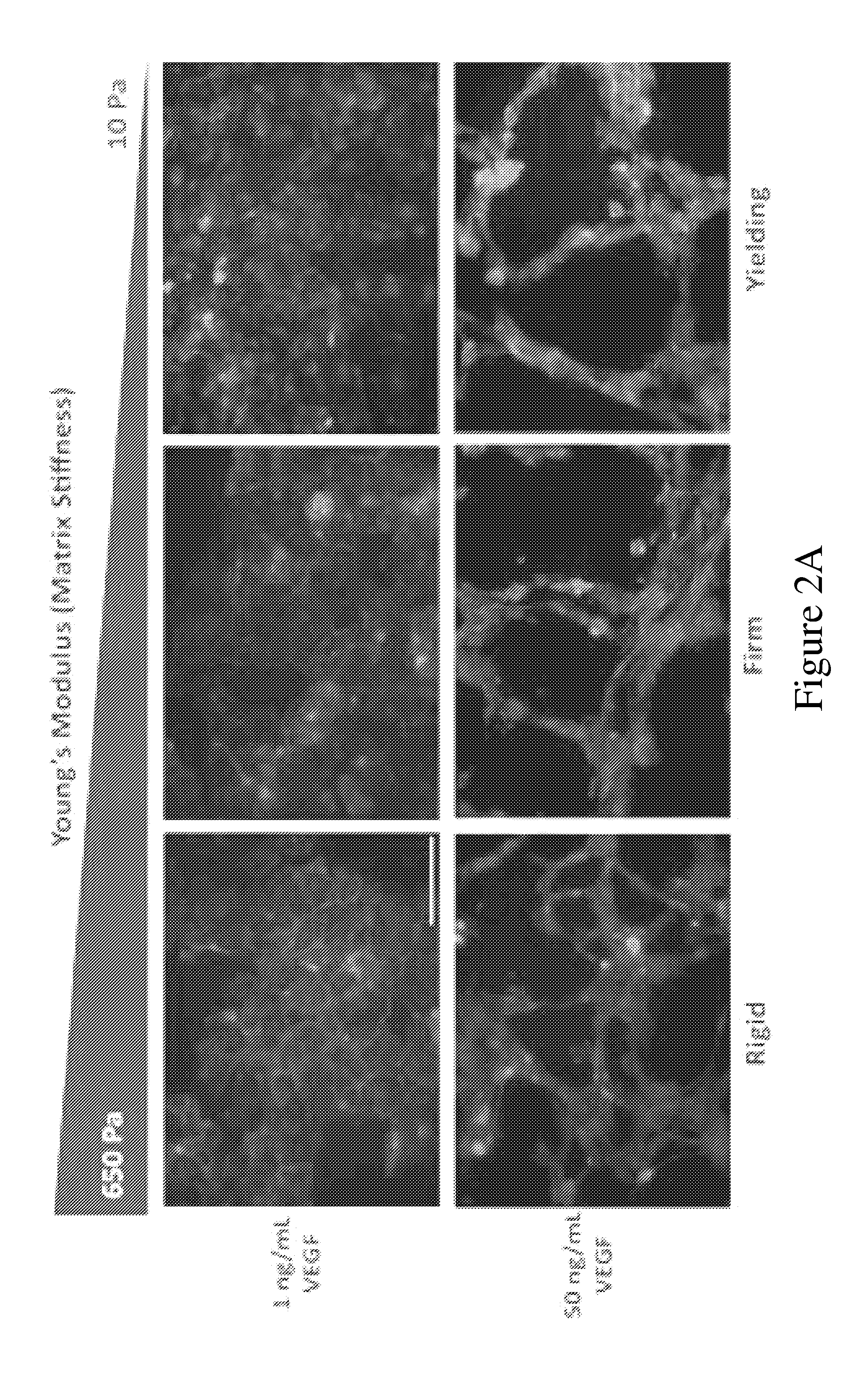Hydrogel-based vascular lineage cell growth media and uses thereof
a technology of vascular lineage cells and growth media, which is applied in the direction of prosthesis, peptide/protein ingredients, peptides, etc., can solve the problems of limited use of natural ecm hydrogels, limited clinical use, and inability to manipulate vascular tissue engineering. to achieve the effect of reducing substrate rigidity, reducing matrix stiffness, and increasing tube morphogenesis
- Summary
- Abstract
- Description
- Claims
- Application Information
AI Technical Summary
Benefits of technology
Problems solved by technology
Method used
Image
Examples
examples
[0132]Hyaluronic acid (HA)-gelatin hydrogels were used to assess how medium stiffness affects EPC tube morphogenesis. One advantage of HA-gelatin hydrogels is that the chemistry of the network can be controlled via reaction conditions and kept uniform between the various batches, which is difficult or impossible to achieve with naturally derived matrices such as matrigel and collagen. Furthermore, while enzymatic crosslinking of natural gels such as matrigel and collagen allows studies of increased stiffness, chemically modified HA-gelatin hydrogels enables control over crosslink density, and the ability to assess cellular responses over a wide range of tunable mechanical stimuli. Previous studies demonstrated that HA-gelatin hydrogels support in vivo angiogenesis (Shu et al., J. Biomed. Mater. Res. A, vol. 79, pp. 902-912, 2006) and embryonic vasculogenesis (Gerecht et al., Proc. Natl. Acad. Sci. U.S.A., vol. 104, pp. 11298-11303, 2007). Thiol-modified HA-gelatin hydrogels enables ...
example 2
Materials and Methods
Human ECFCs
[0155]Human umbilical cord blood ECFCs isolated from outgrowth clones, provided by Dr. Yoder, Indiana University School of Medicine, expanded in endothelial growth media (EGM; PromoCell GmbH, Germany) and used for experiments between passages 6 and 8 as previously described (Hanjaya-Putra et al., Journal of Cellular and Molecular Medicine, vol. 14, no. 10, pp. 2436-2447, 2010).
Synthesis of AHA-Hydrogels
[0156]Acrylated hyaluronic acid (AHA) was synthesized using a two-step protocol: (1) Synthesis of the tetrabutylammonium salt of HA (HA-TBA) was performed by reacting sodium hyaluronate (64 kDa, Lifecore) with the highly acidic ion exchange resin Dowex-100 and neutralization with 0.2 M TBA-OH. (2) Coupling of acrylic acid (2.5 eq) and HA-TBA (1 eq, repeat unit) in the presence of dimethylamino pyridine (DMAP; 0.075 eq) and di-tert-butyl-dicarbonate (1.5 eq) in DMSO, followed by dialysis and lyophilization. 1H NMR spectrum was used to confirm the final p...
PUM
| Property | Measurement | Unit |
|---|---|---|
| Young's modulus | aaaaa | aaaaa |
| Young's modulus | aaaaa | aaaaa |
| Young's modulus | aaaaa | aaaaa |
Abstract
Description
Claims
Application Information
 Login to View More
Login to View More - R&D
- Intellectual Property
- Life Sciences
- Materials
- Tech Scout
- Unparalleled Data Quality
- Higher Quality Content
- 60% Fewer Hallucinations
Browse by: Latest US Patents, China's latest patents, Technical Efficacy Thesaurus, Application Domain, Technology Topic, Popular Technical Reports.
© 2025 PatSnap. All rights reserved.Legal|Privacy policy|Modern Slavery Act Transparency Statement|Sitemap|About US| Contact US: help@patsnap.com



